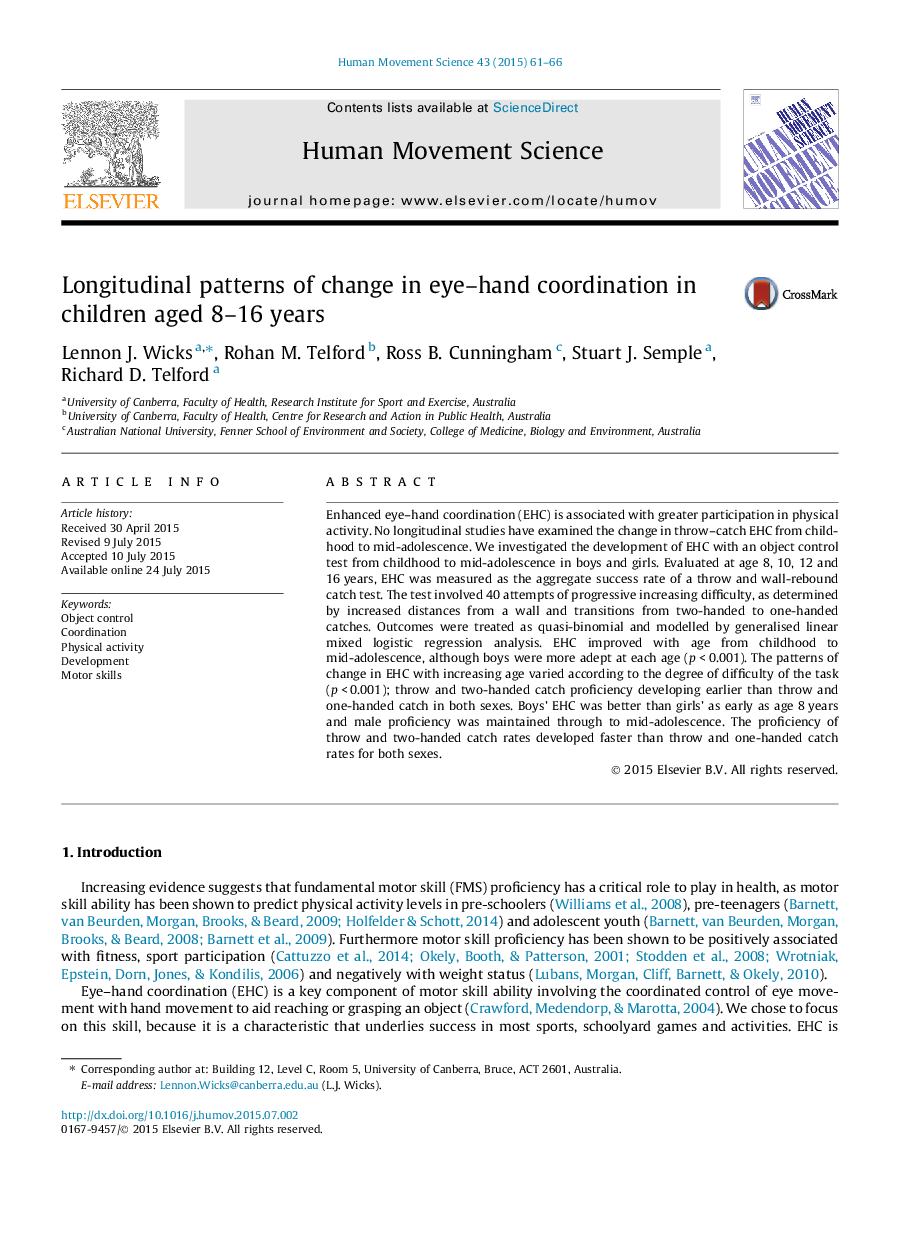| Article ID | Journal | Published Year | Pages | File Type |
|---|---|---|---|---|
| 928263 | Human Movement Science | 2015 | 6 Pages |
•First longitudinal study examining the development of eye–hand coordination.•Eye–hand coordination assessed using a practical, easy-to-administer test.•Boy’s eye–hand coordination is consistently better than girls.
Enhanced eye–hand coordination (EHC) is associated with greater participation in physical activity. No longitudinal studies have examined the change in throw–catch EHC from childhood to mid-adolescence. We investigated the development of EHC with an object control test from childhood to mid-adolescence in boys and girls. Evaluated at age 8, 10, 12 and 16 years, EHC was measured as the aggregate success rate of a throw and wall-rebound catch test. The test involved 40 attempts of progressive increasing difficulty, as determined by increased distances from a wall and transitions from two-handed to one-handed catches. Outcomes were treated as quasi-binomial and modelled by generalised linear mixed logistic regression analysis. EHC improved with age from childhood to mid-adolescence, although boys were more adept at each age (p < 0.001). The patterns of change in EHC with increasing age varied according to the degree of difficulty of the task (p < 0.001); throw and two-handed catch proficiency developing earlier than throw and one-handed catch in both sexes. Boys’ EHC was better than girls’ as early as age 8 years and male proficiency was maintained through to mid-adolescence. The proficiency of throw and two-handed catch rates developed faster than throw and one-handed catch rates for both sexes.
